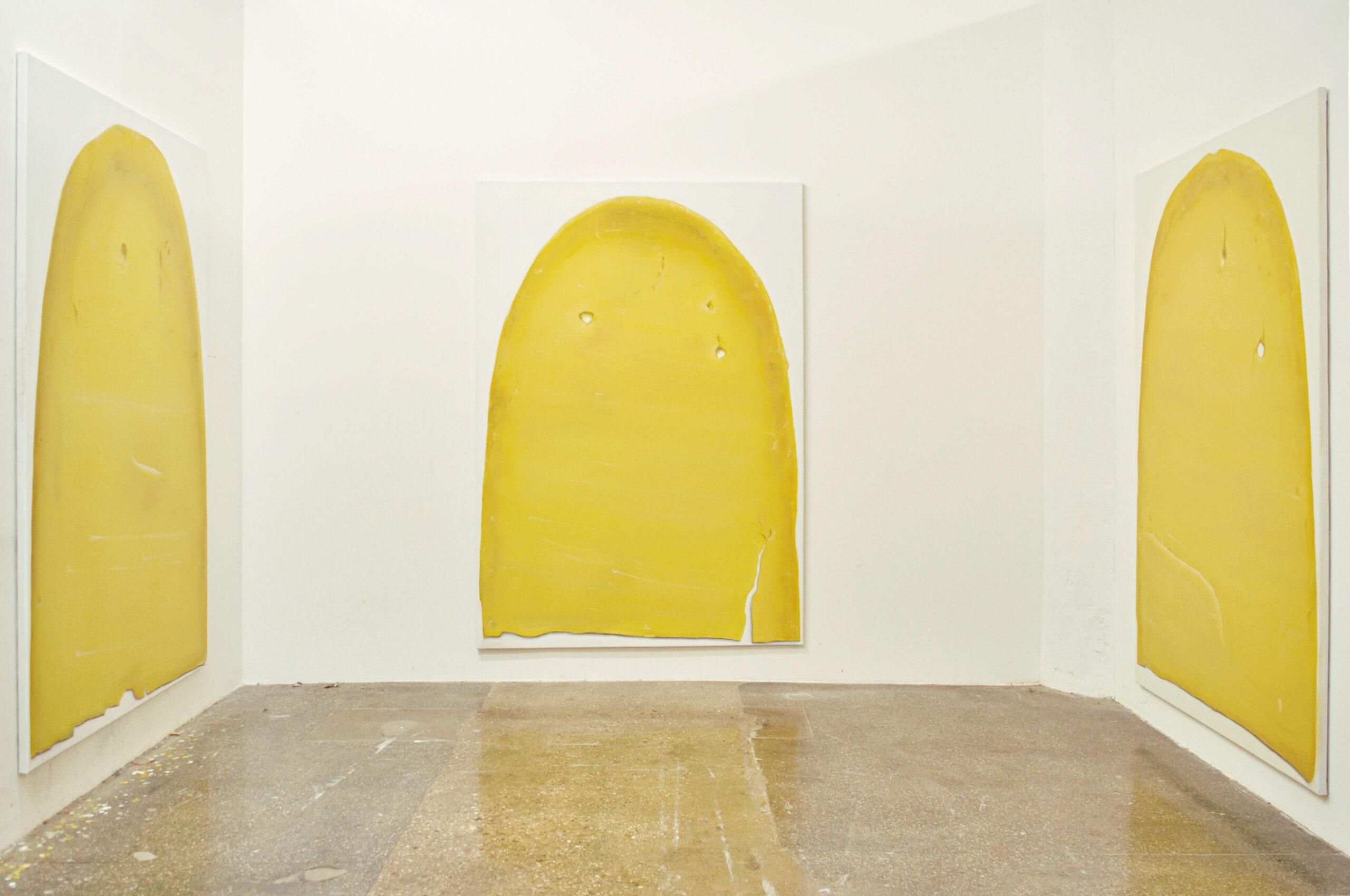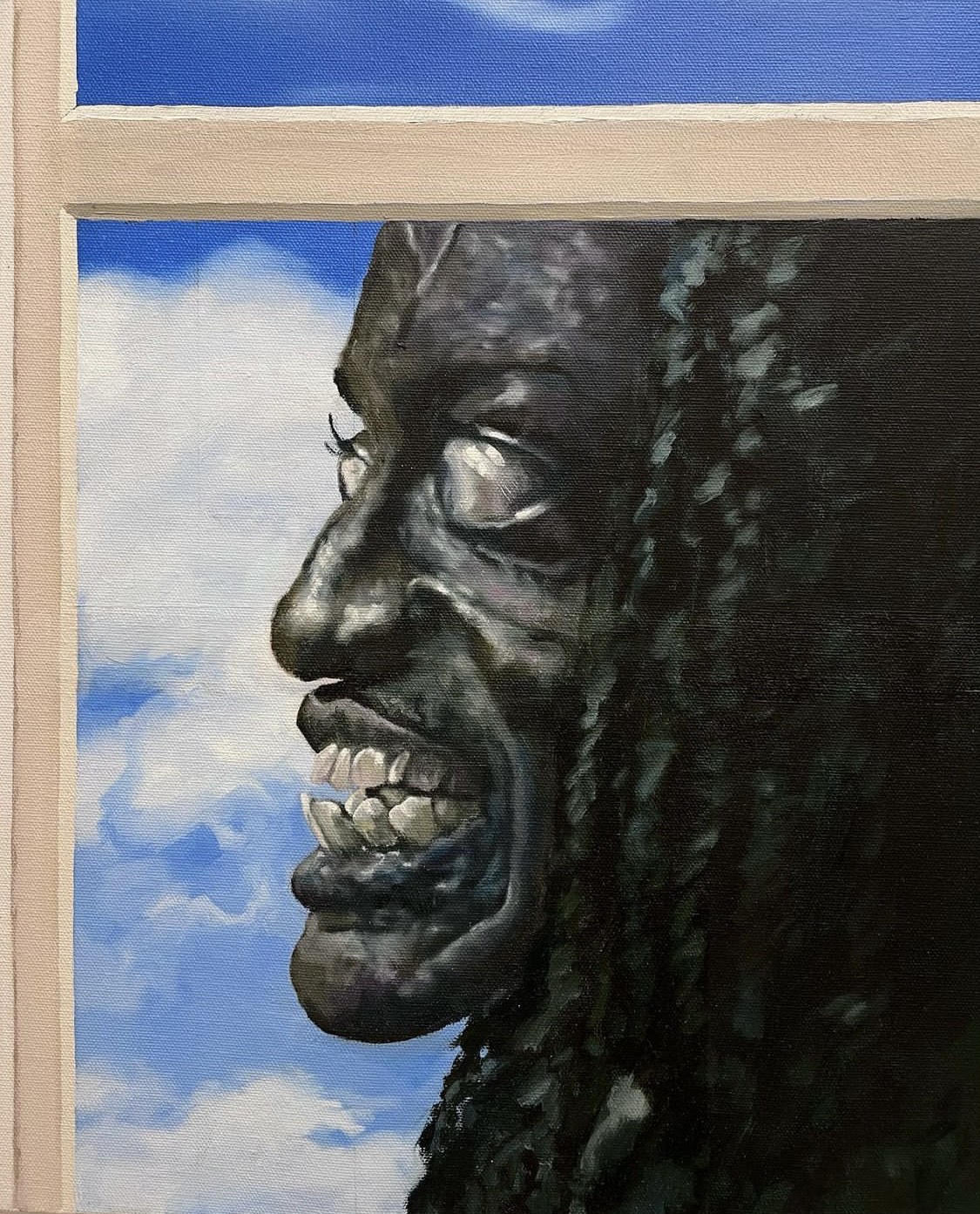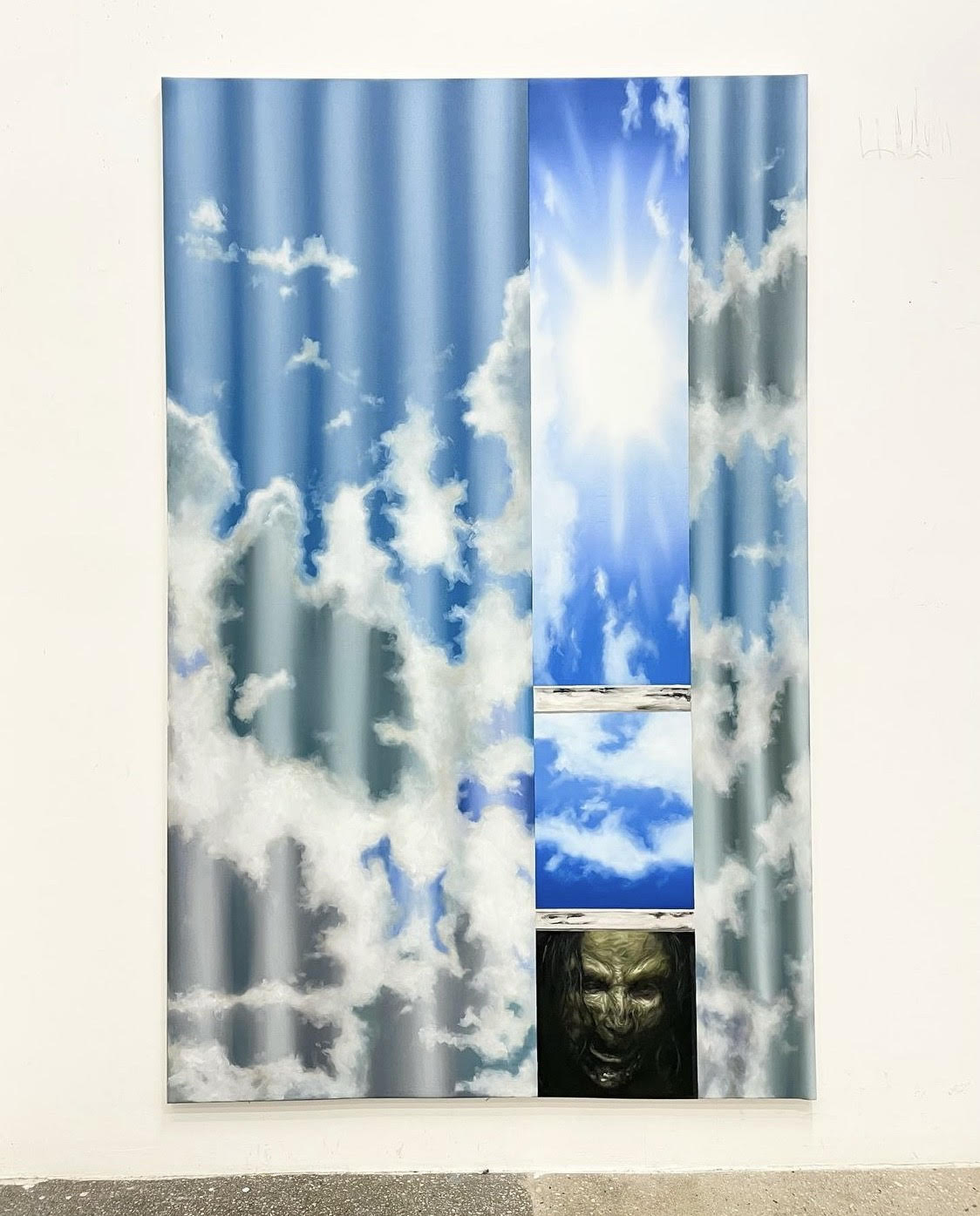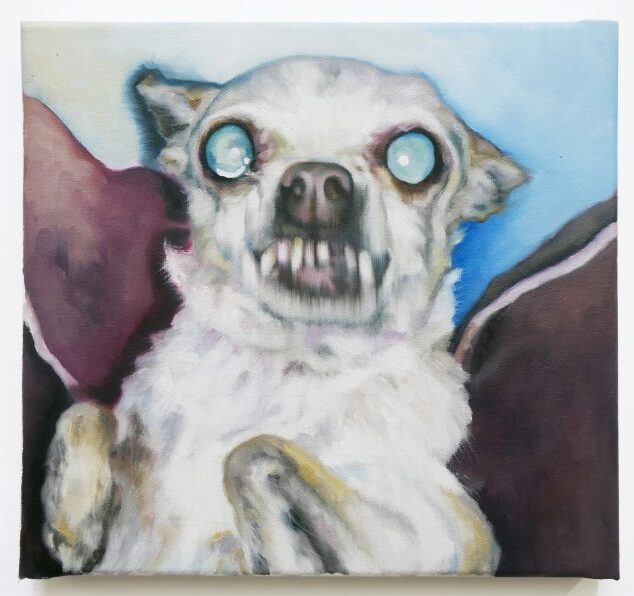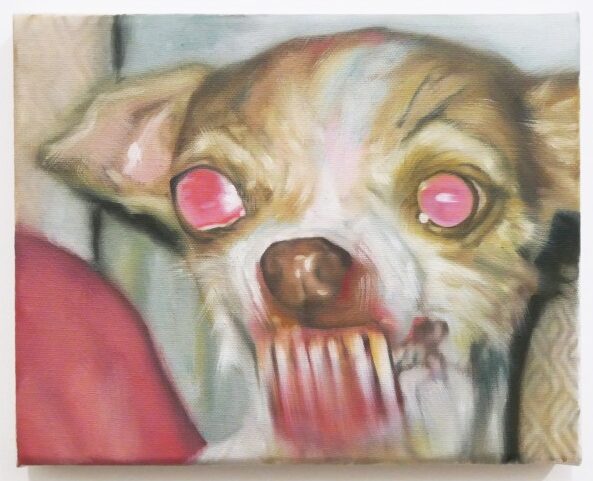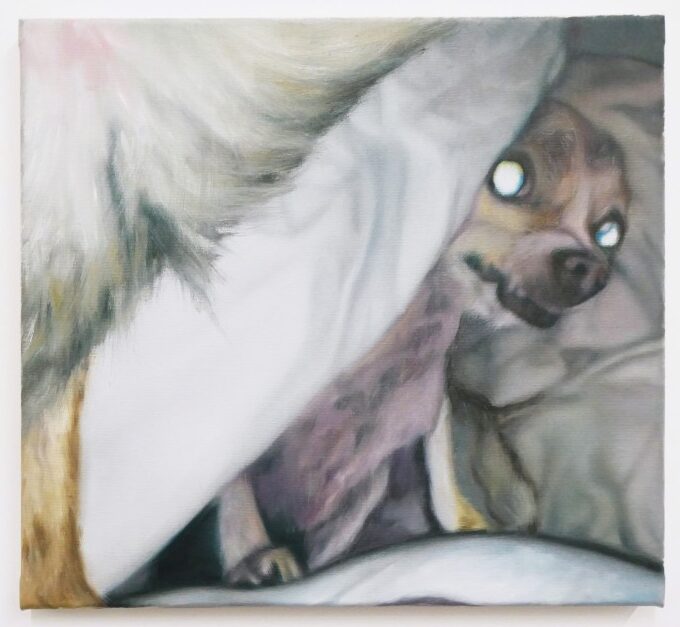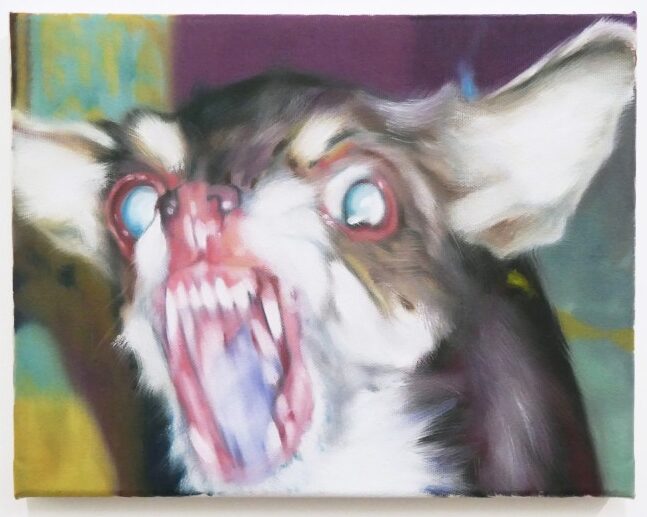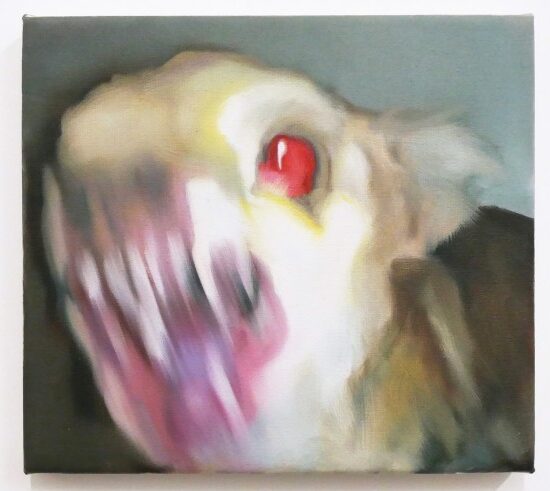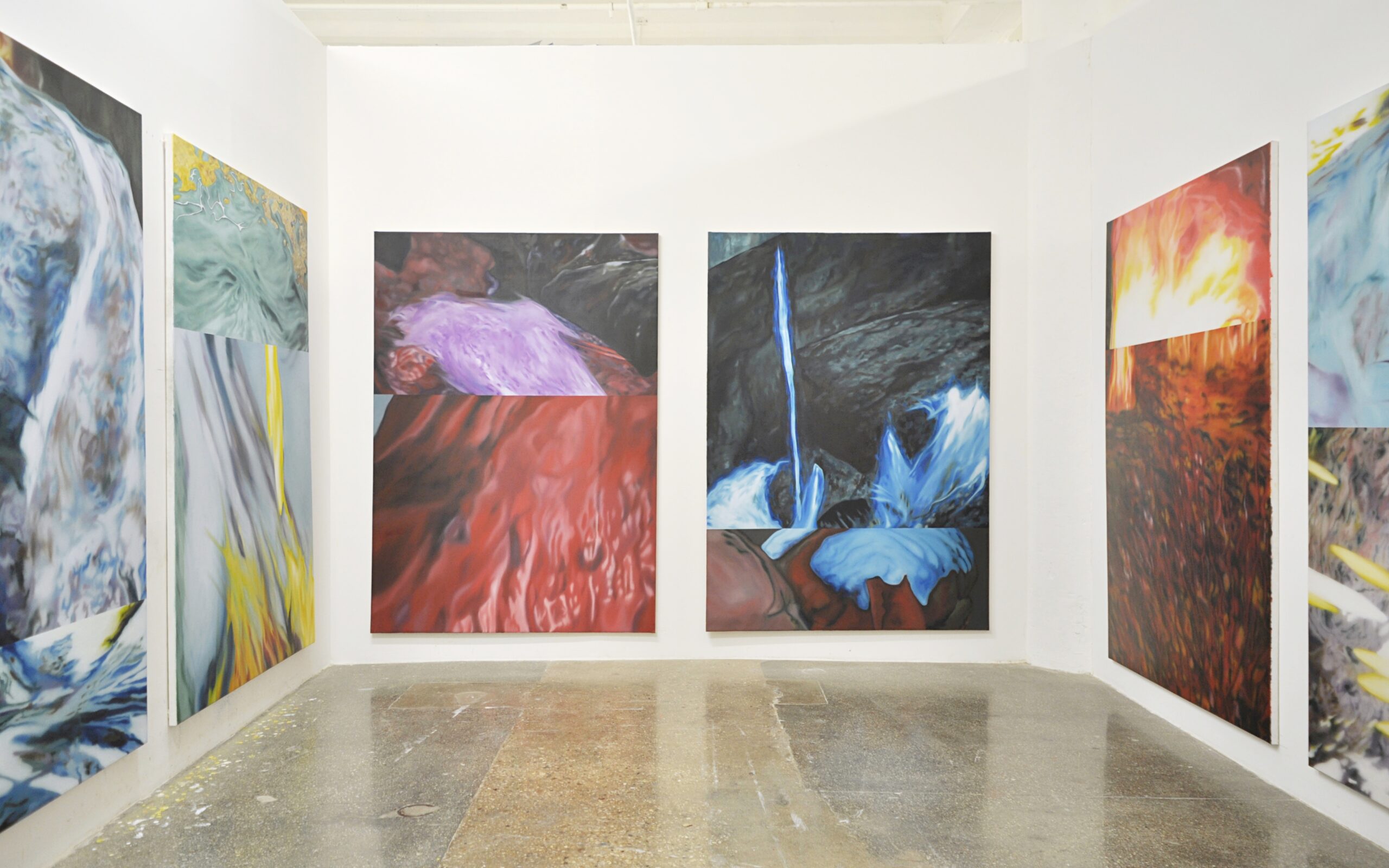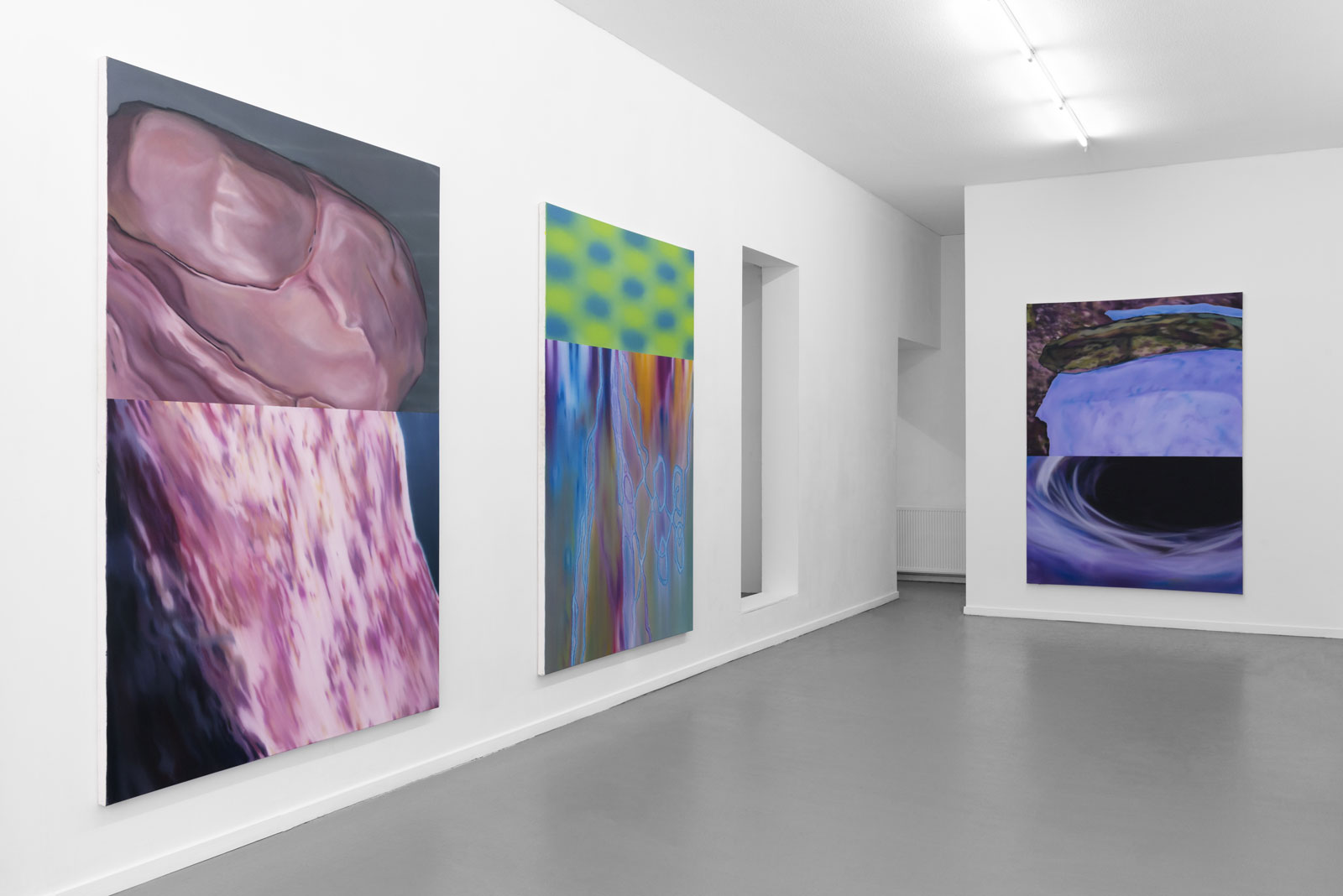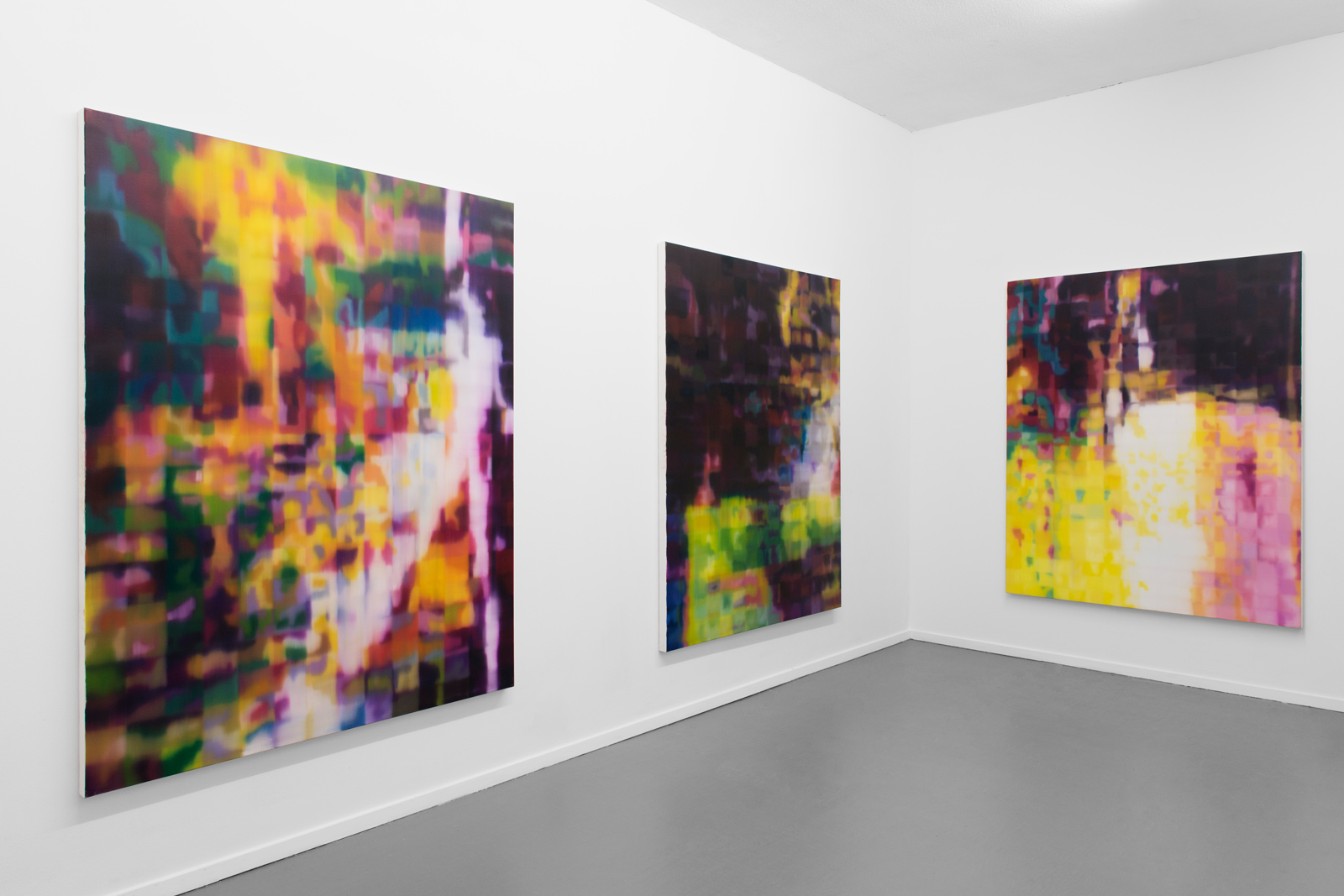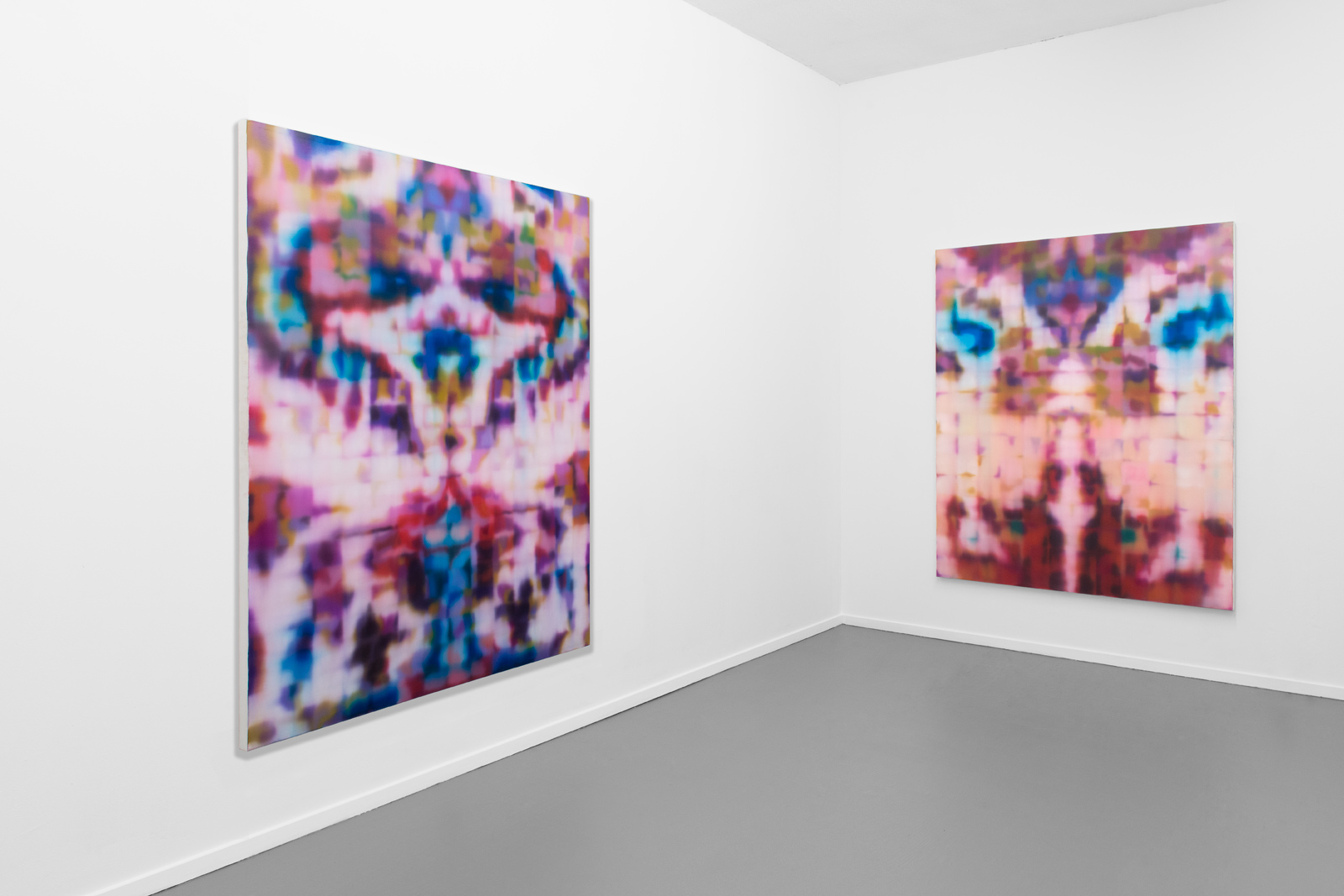Share this
Robert Roest (b.1992), is a Dutch artist who grew up in a small village of about 2000 people, in Holland. His practice of painting is visually rooted in both the contemporary world of new media and the history of painting. His work is structured in series of 5-10 paintings. By approaching the work via a serial method he is able to explore the possibilities of his themes from different angles, deploy multiple styles, and keep his work open and not be pinned down on a particular idea or perspective. This structured method is not about artistic freedom, it has everything to do with conceptualizing ideas, thoughts and themes that Roest wants to address in his work.
In his work Roest explores phenomenons like perception, projection, illusion and representation. It is about the interrelationship between reality and your senses. Briefly, all his work revolves around the questions ‘can you trust your senses?’ ‘Can you believe your eyes?’ The paintings are much about the physical experience of seeing. They are about the impact images have on us, not at least the images we see online. Even deeper they are about the impact our eyes have on images, since an image doesn’t fundamentally change over time, but our ways of seeing, and our views, does.
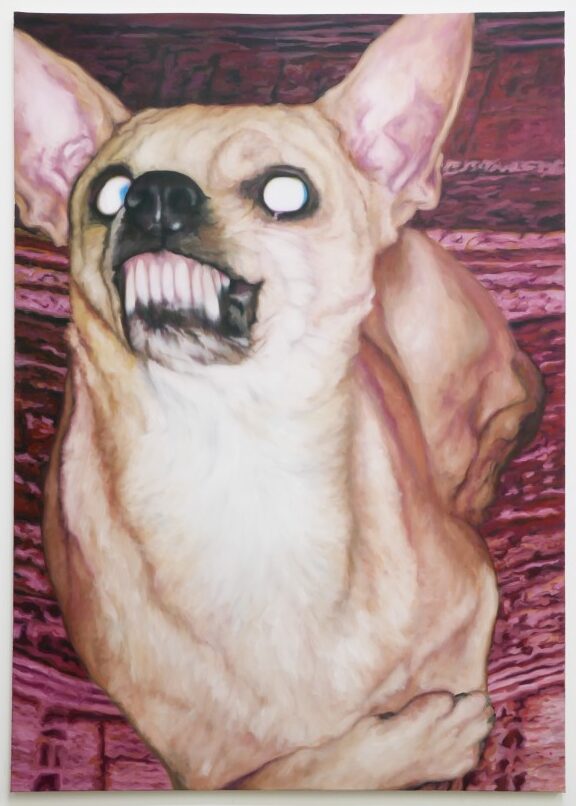
In 2019 you moved to Jersey City in America. What brought you there? And how is life like?
I fell in love with an American girl 😉 I usually only paint 2 or 3 days a week. I can’t live off my art. Perhaps in the future, who knows. I have a side job in solar energy, where I work 3/4 days, and the rest I work on my artist practice. I often start around 9.30 – 6 in the evening.
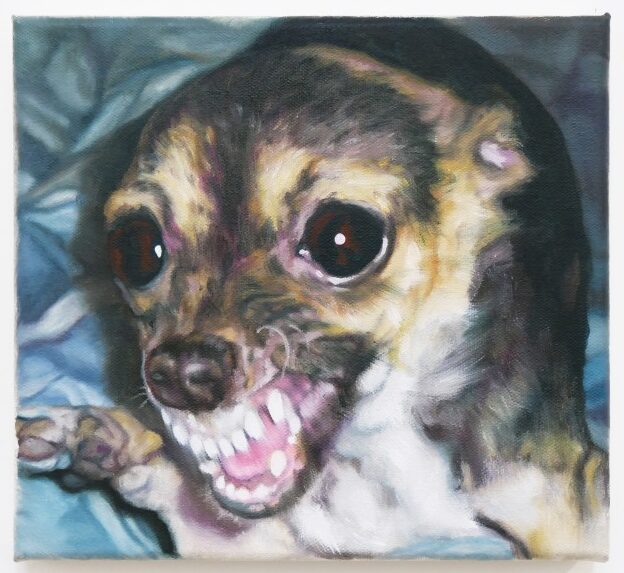
When did you start to paint and draw?
I can’t really remember a time where I didn’t paint, but I must have started around 3 or 4 years old. Of course it is part of the school program for kids, but I was also painting and drawing at home for my own pleasure.
Around 2020 your paintings begin to change, and you start painting the angry dogs that looks like they’re possesed. What made you change your style?
I more or less change my style with every series I make. I don’t really have one style that I keep using. I have ideas and I adopt a style that suits the idea best. Sometimes that is an abstract expressionist kinda style, or a minimalistic style, or, like in case of the dogs, a figurative style that heavily leans on classical paintings. For different feelings and thoughts we have, we use different ‘styles’ of language and emotions to express them. My practice works a little bit like that.
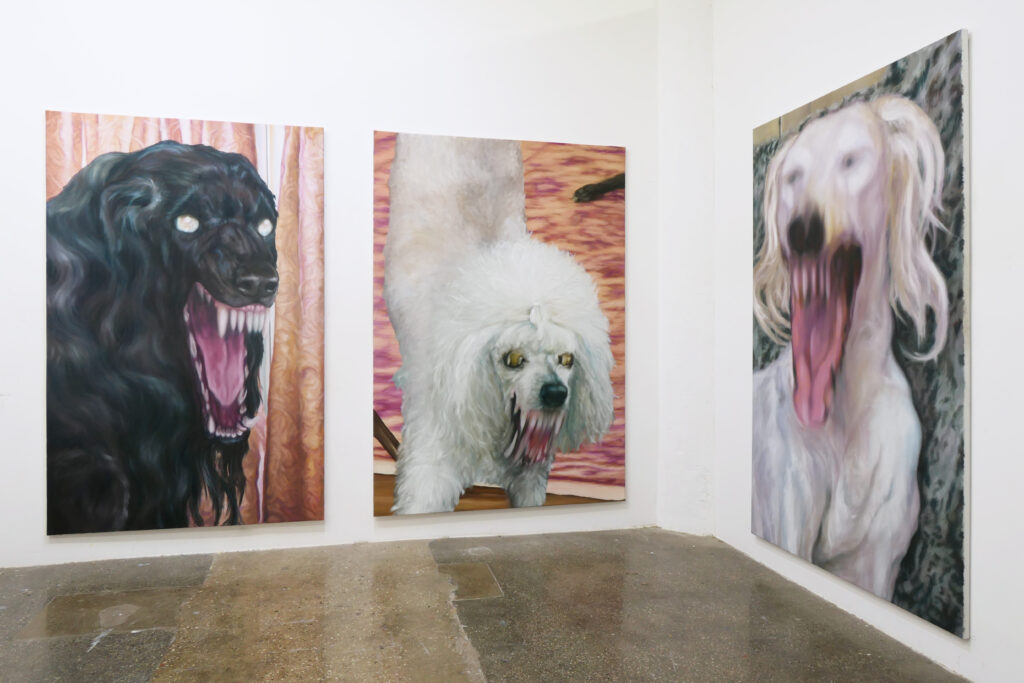
What is it about dogs that intrigues you? And does the anger in them symbolize anything?
Firstly the impact of the seemingly aggresive pictures I used itself. Dogs are our most beloved faithful pets and to see them in such anger I found interesting. Part of my interest in them, which ties into the themes of my work in general, is the deceitfullness of the images. The pictures I used where snapshots with a lot of camera failure. Like shot in not well lit spaces, which results in blurry agressive jaws, or camera flash light making the eyes look possesed. The dogs photographed may well be very sweet and just yawning, or just barking normal. The medium and technique of the camera makes them look agressive, not the dogs themselves. They symbolize that photos can totally mislead you, and that we mislead ourselves in general perhaps quite often.
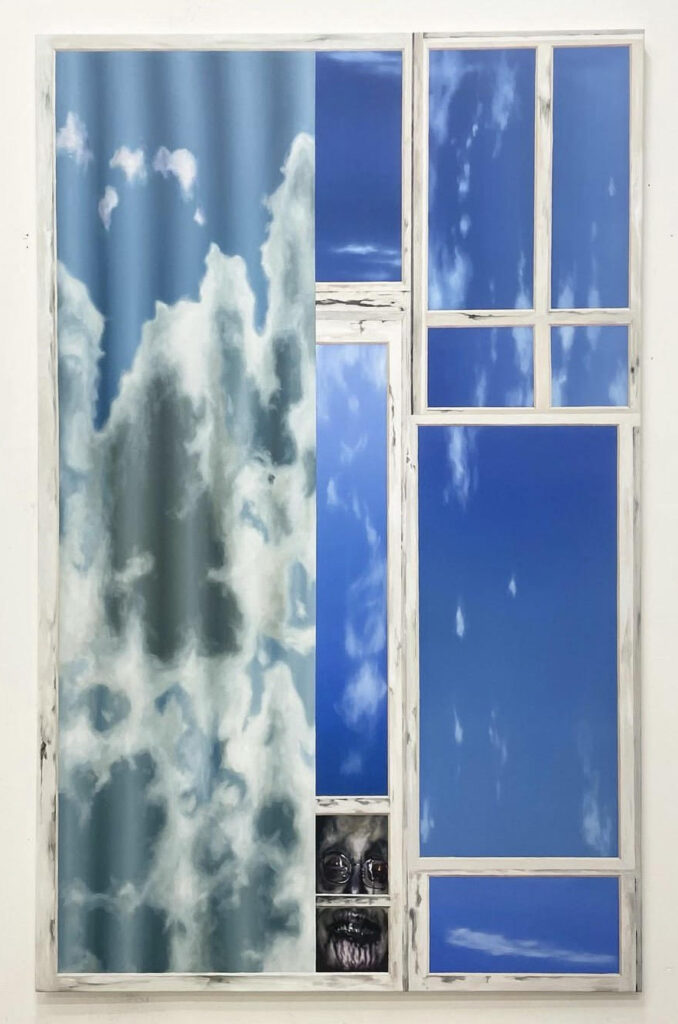
Your newest pieces are a part of your “Theology of a dead god – zombie salvation” series, and features monsters and zombies as well heaven. Talk to me a little bit about the creation and background for this series.
This series started very banal with my desire for having windows in my only-walls-studio. On the computer I collaged the pictures together with windows and curtains with clouds on them. For two years I didn’t know what to do with it. There was something missing. They were too boring. After doing research I finally came up with the idea to put zombies in them. From then on the content of the series became a reflection on cliche religious imigary, a contemporary version of renaissance heaven and hell paintings, used to warn people back in the day. My background is very religious, I grew up in a conservative christian family. This series has to do with the theology of that.
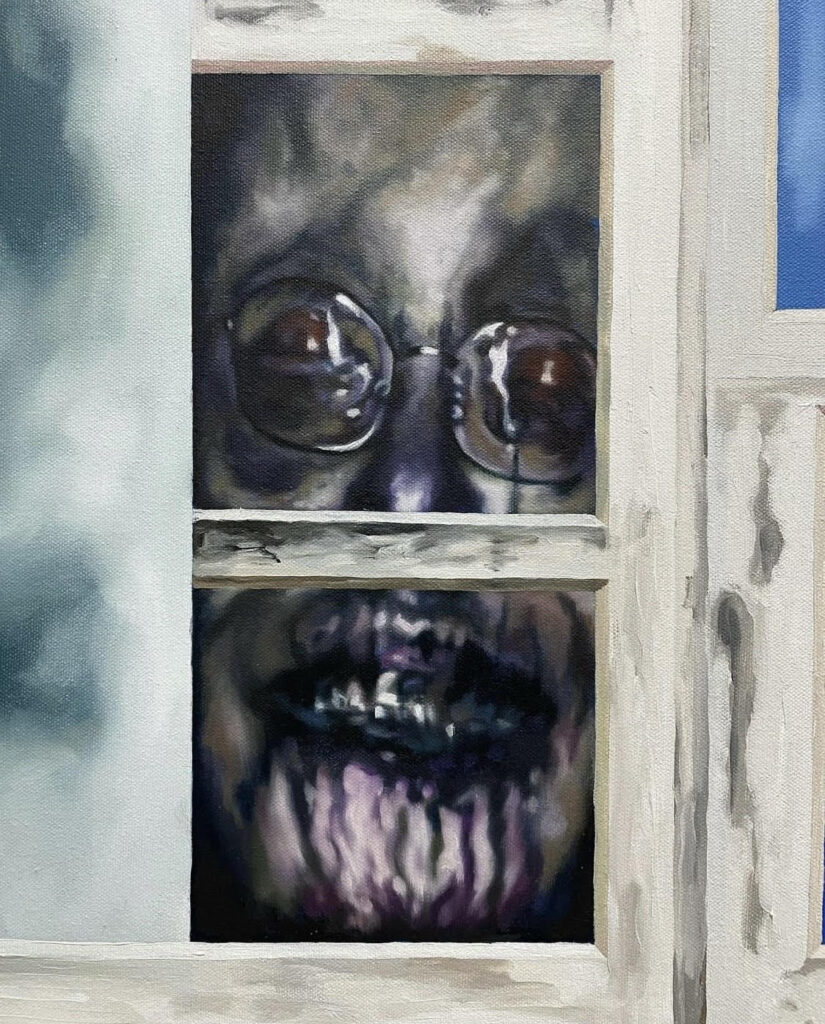
Going back and looking at some of your work from 2021, your angelic pieces stands out to me. If I compare them to some of your other pieces, it makes me wonder, do you believe in heaven and hell?
I don’t, not in a religious sense. Metaphorically moments in life we sometimes call heaven, in blisfull experiences, and others hell, in the most terrible experiences. The angelic clouds are in some sense similar to the dog paintings. They are just clouds, waterdrops arranged in a certain natural way, and with light coming from the right angle they can look like what we think angels look like. Those clouds are not angels, I don’t think someone ever saw a real bodily angel. But in our minds we connect the clouds I paint with what we think of as an angel. They have, among others things, to do with our human talent for meaning-making. The meaning I think, is not in the things in and of themselves, but in our perception. Animals function without giving meaning to things, as far as I know. We can’t do without it.
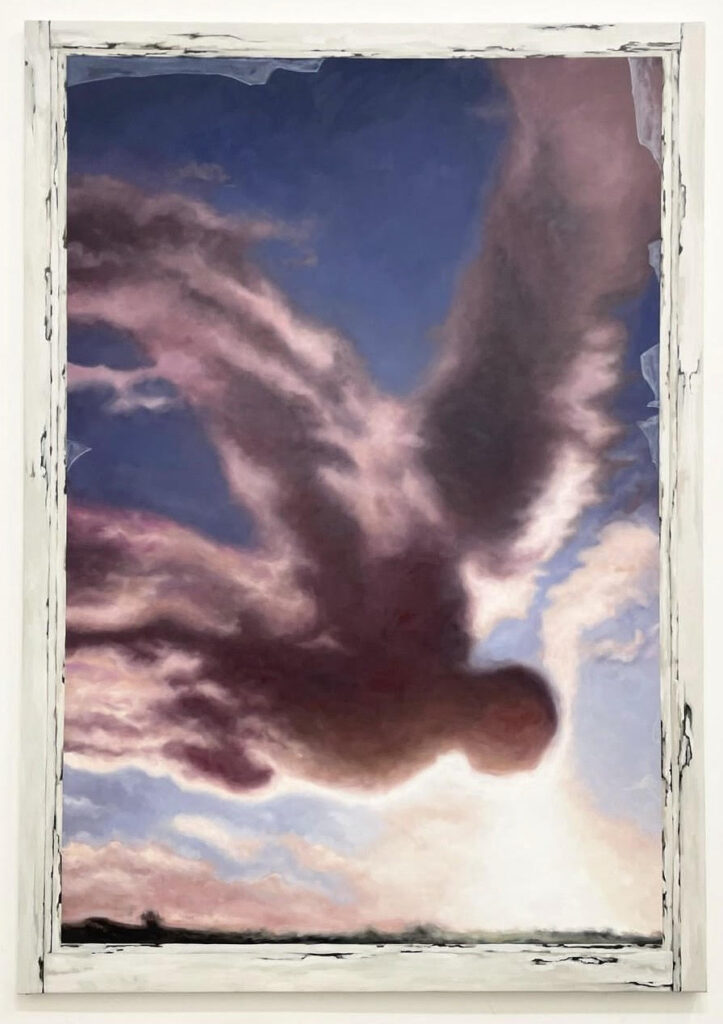
Going even deeper with my observations: The heavens, the angels, the monsters, which represents evil. Are you a religious man?
I don’t adhere to any religion. But depending on the narrowness or wideness of the definition of ‘religious’, there are not a lot of people completely non-religious.
What do you hope the observer gets out of your paintings?
I am quite skeptical of paintings and art in general being well able to transmit ideas very well. Text is often better able to transmit ideas. I am already happy if observers find them to be good paintings, good art. But one always needs text to transmit ideas. I hope that the viewers perhaps get from my work, that how something appears to us, not always equals what something is in and of itself. In the best case my work makes people aware of our flawed skills of observation and understanding of things, which should make us think at least twice.
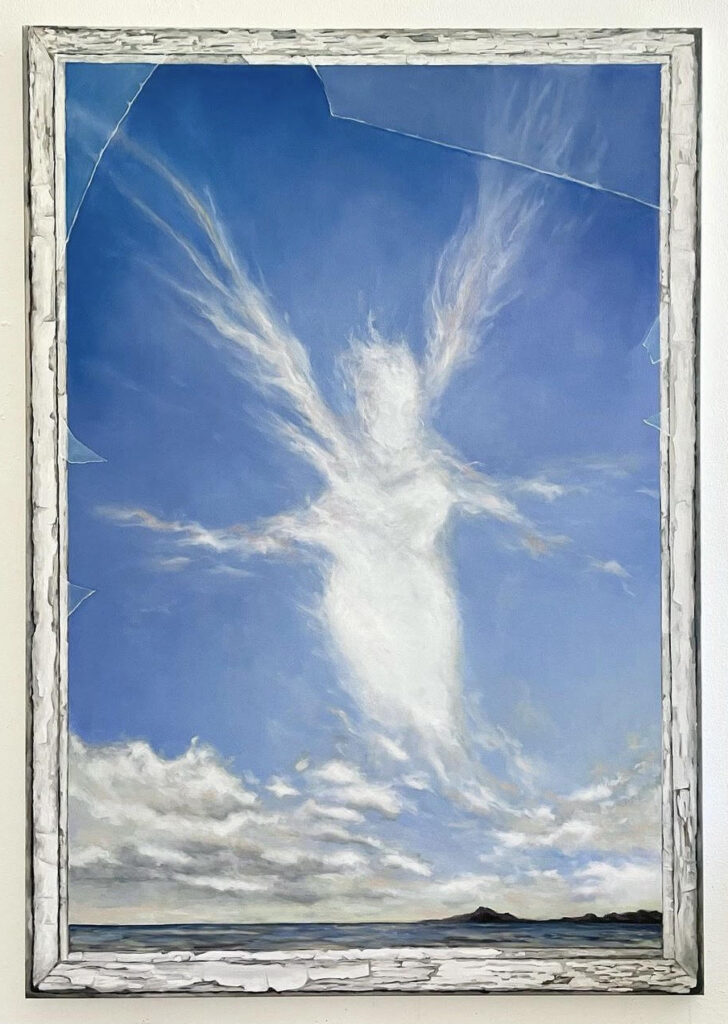
What is your favorite thing to do when you are not painting?
Having good conversations.
What’s your favorite movie and why?
Difficult to pick only one. I find the film “Come and see” by Klimov very good. It gets you as close as art can get you, to a real war experience. It’s disturbingly good. I also like “A Clockwork Orange” a lot. Because it raises so many questions about society, safety, surveillance, personal integrity and much more. A third favorite is ‘The Dirties”, an amazing low-budget film about a school shooting in America. Every artistic choice in that film is spot on.
For more information about Robert, check out his Instagram and website.
